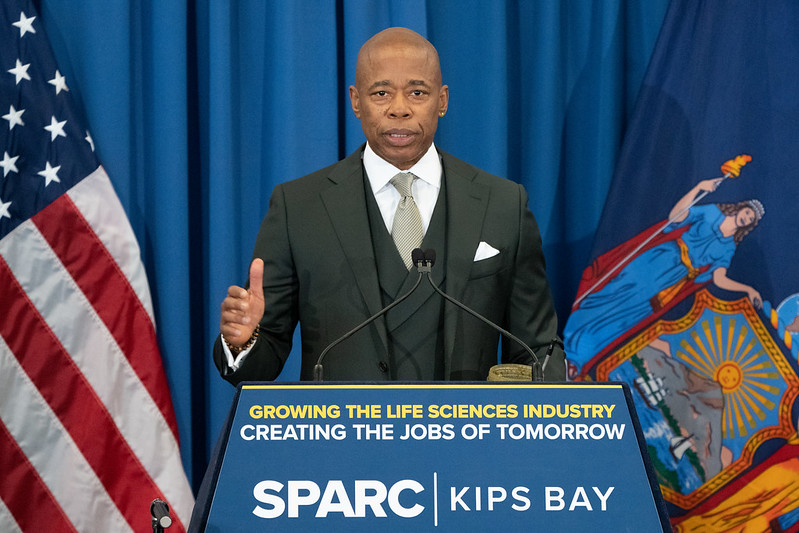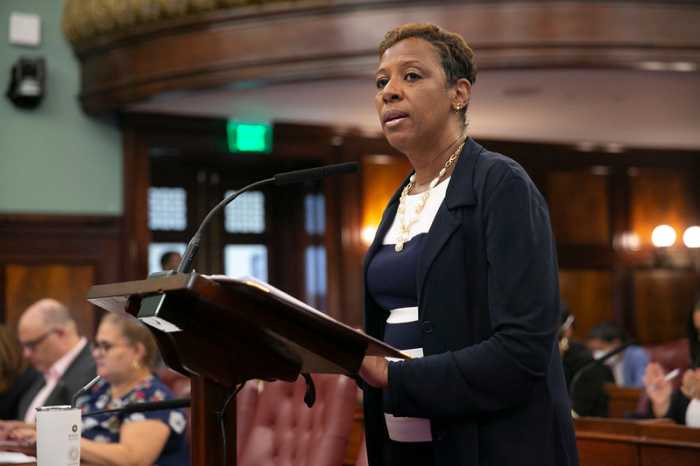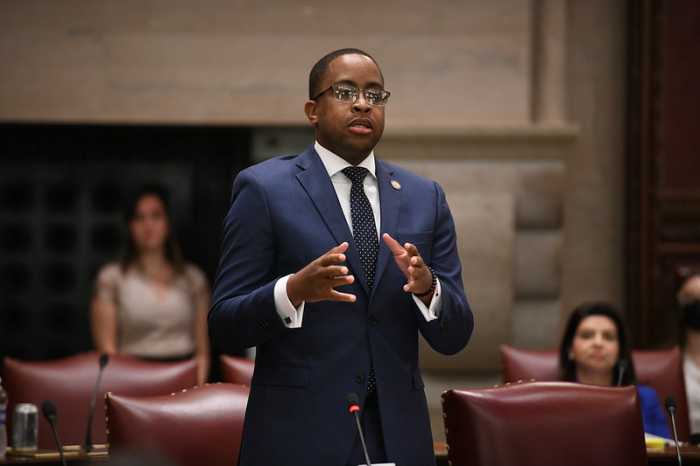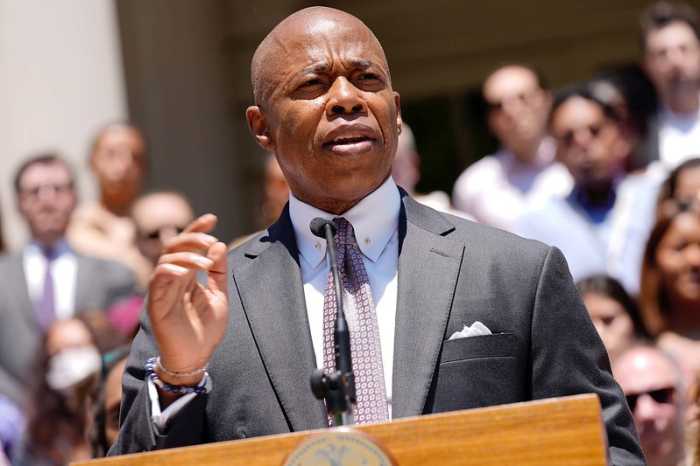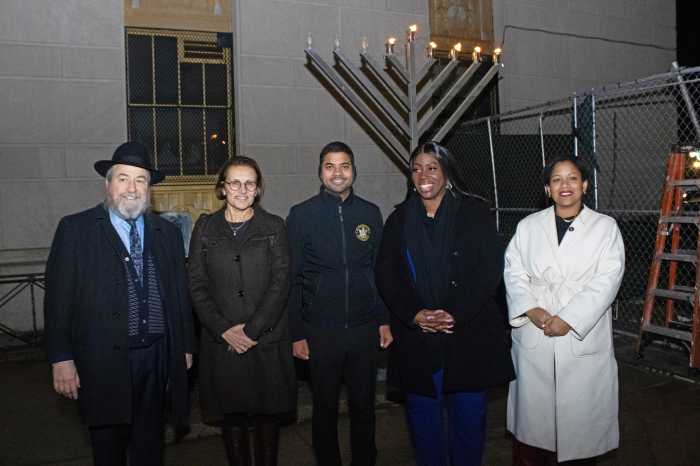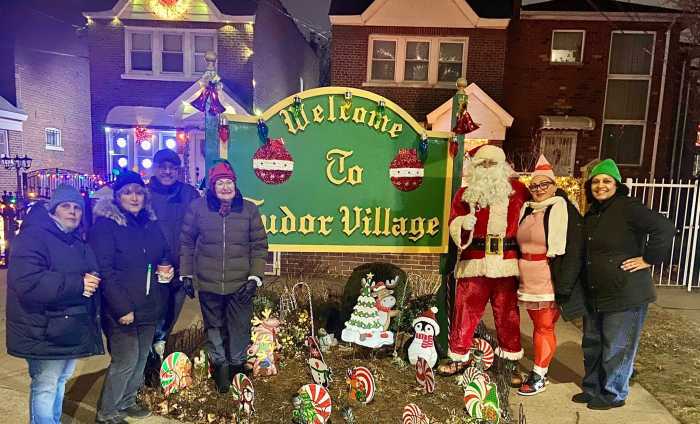Putting a clear spotlight on how well they’ve been working together, Mayor Eric Adams and Governor Kathy Hochul Thursday unveiled plans to build a new $1.6 billion life sciences education and job hub in the Kips Bay section of Manhattan.
The development, which they’re calling the Science Park and Research Campus (SPARC) Kips Bay, will transform the 1.5 million square-foot city block where CUNY Hunter College’s Brookdale Campus currently sits on East 25th St. between 1st Ave. and the FDR Drive into a life science and health care focused hub. SPARC is a public-private partnership between the city, state and the private life sciences sector.
The project will be anchored by new facilities for Hunter’s nursing school, a new city Health + Hospitals (H+H) Bellevue ambulatory care center, a new city high school focused on preparing students for careers in health care and science and new commercial office space.
While announcing the SPARC at the current Hunter Brookdale Campus, Adams said this new hub will help attract talent in the life sciences sector to the city from around the country and the world.
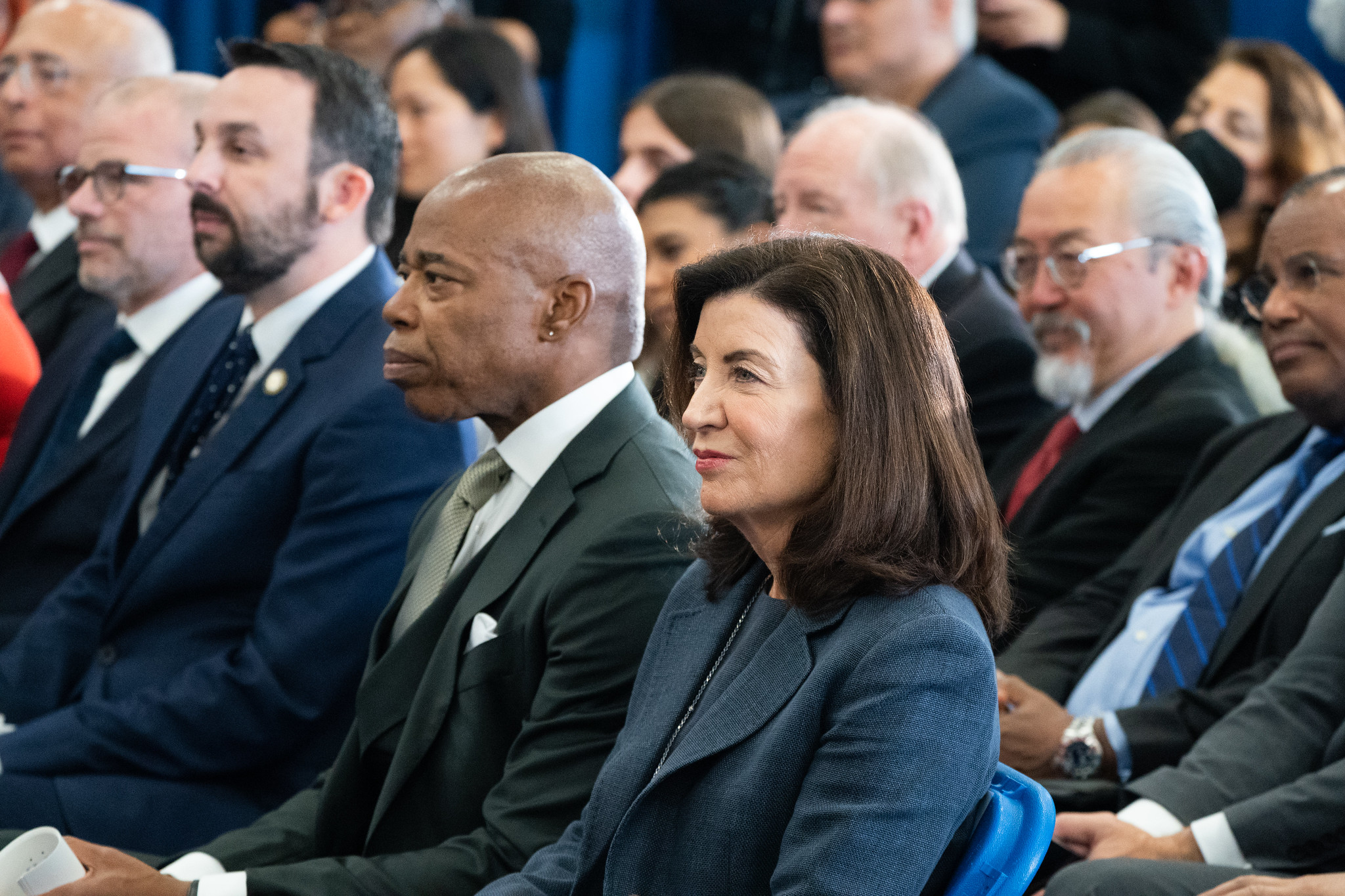
“This new science park and research campus, SPARC, as far as the governor alluded to in Kips Bay is more than just a hub for life science. It really will become the feeding ground for ideas, for employment, for attracting people to this city,” Adams said. “The magnetic and gravitational pull of this hub is going to bring businesses here all over the country, if not the globe. It’s a bridge to the future that will take students from today directly into the economy of tomorrow. We’re going to make sure New York City leads the globe in life science and public health careers.”
“We’re gonna have everything from labs to office space to classrooms, business incubators, all the pieces we need,” he added. “As well as open space for public ground, improvements for the neighborhood and community. This is going to revitalize this entire area.”
Joining Adams and Hochul were city Economic Development Corporation President and CEO Andrew Kimball, CUNY Chancellor Félix Matos Rodríguez and City Council Member Keith Powers – whose support is key to getting the project over the finish line as the area’s representative on the council.

Adams said the project is expected to generate $25 billion in revenue for the city over the next three decades and create 10,000 jobs – 2,000 of which will be permanent.
Both the mayor and the governor emphasized that this plan is the result of their administrations working closely together, which wasn’t the case with their predecessors Bill de Blasio and Andrew Cuomo, who were locked in a bitter feud during much of their overlapping tenures.
“Our teams working together were able to break through decades of roadblocks and hurdles that needed just a commitment to just roll up those sleeves and work together,” Hochul said. “What a radical idea, the city and state working together. How about that? Dreams do come true. Dreams do come true.”
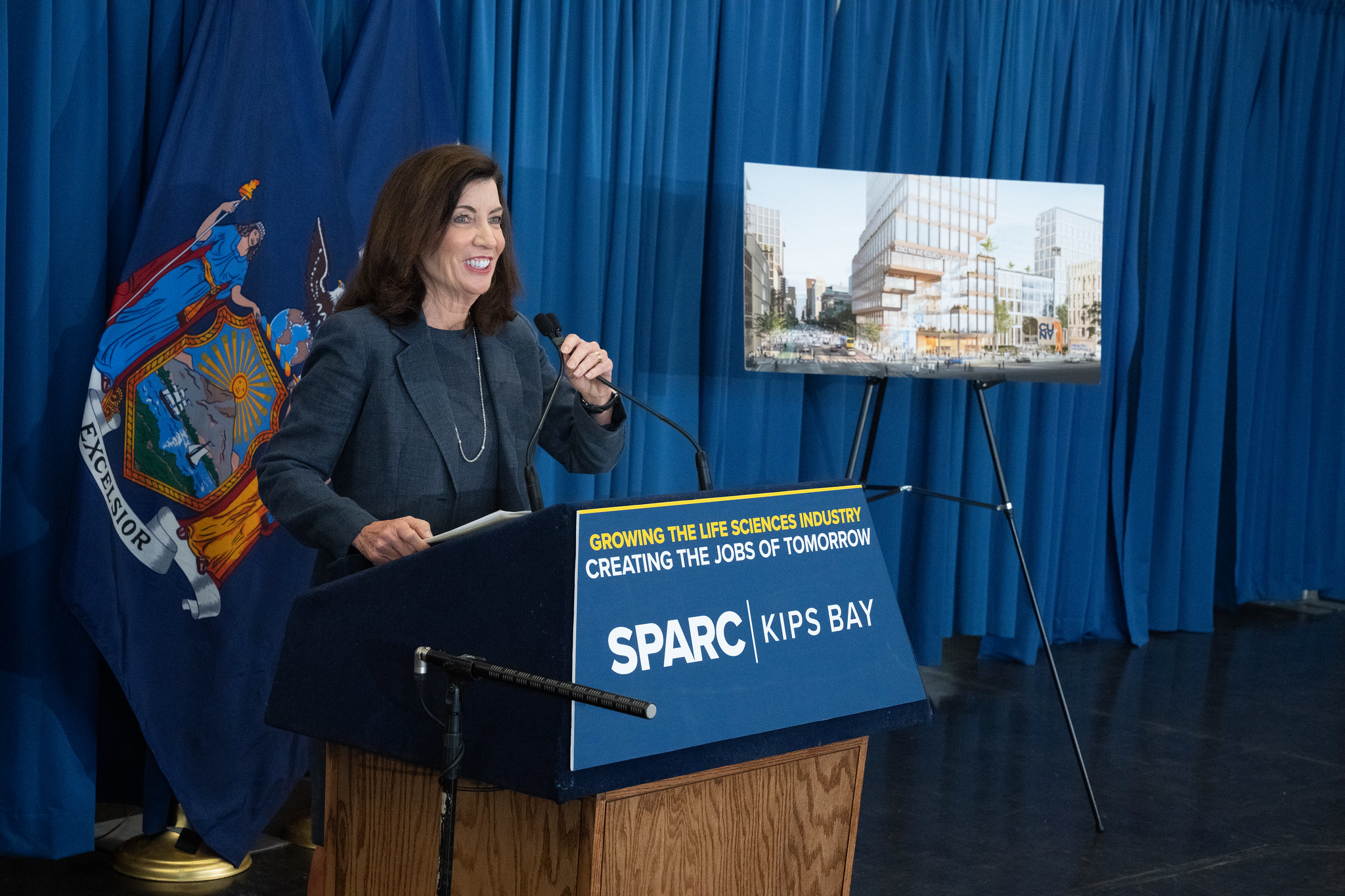
According to Kimball, the CUNY piece of the $1.6 billion project is being funded through a 50-50 split between the city and state of roughly $500 million a piece. Additionally, he said, the city has committed $700 million through funding for its health related agencies and there’ll be close to another $1 billion in private investment from the life sciences industry.
Hochul said they chose the life sciences sector as the focus of this hub both because of the major shortage of health care professionals New York faced during the worst days of the COVID-19 pandemic and that her administration has data showing people in the industry are leaving other cities to be here. That data, the governor said in response to a reporter’s question on where it came from, is currently being gathered and will be available by the end of the year.
“The main thing we have is the talent,” Hochul said. “People are leaving other cities. We have data that shows that they want to be here. So we get the talent. We get the world class facilities. Investments that perhaps should have been made a decade ago are being made now. And so that’s why I believe that this is a place for this innovation because people want to be here in New York and our residents deserve the best health care available and they’ll get that.”


